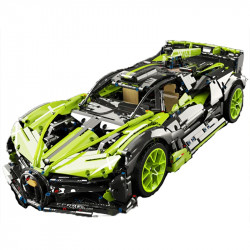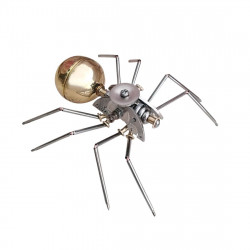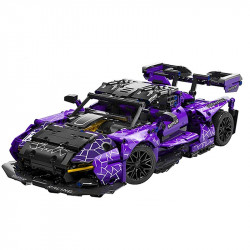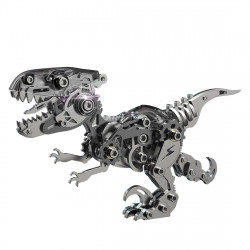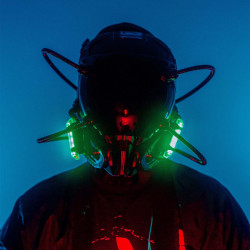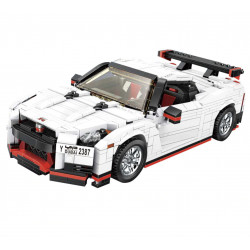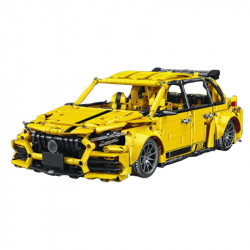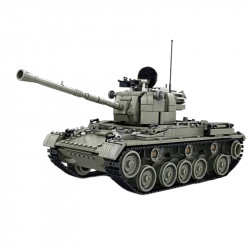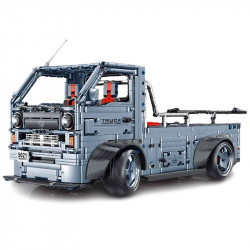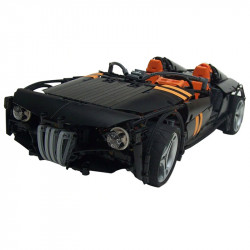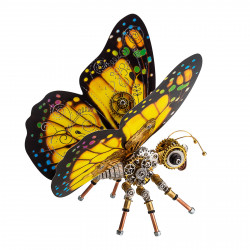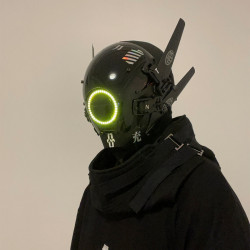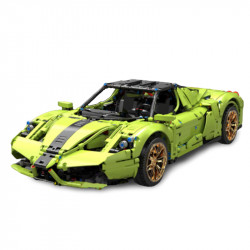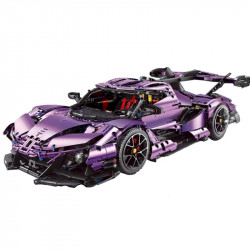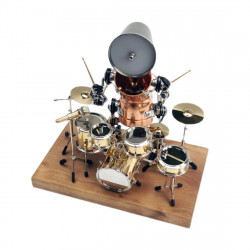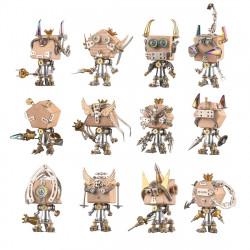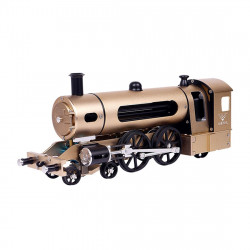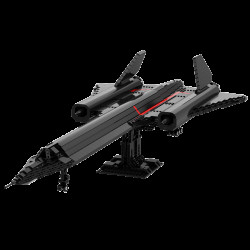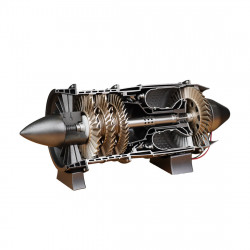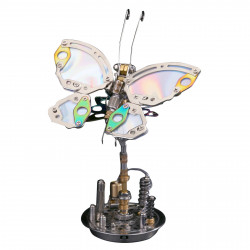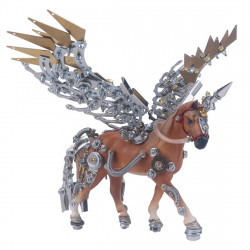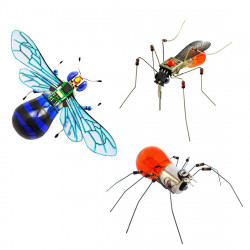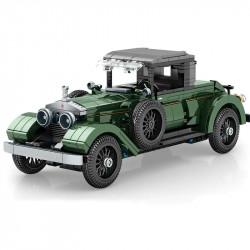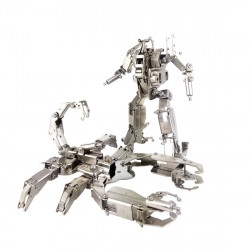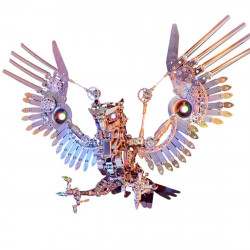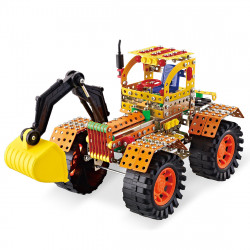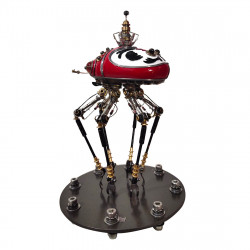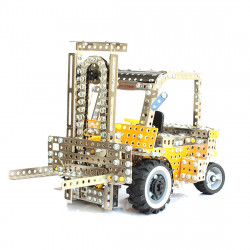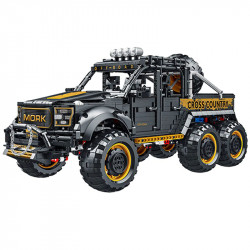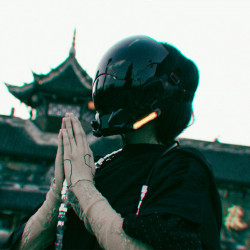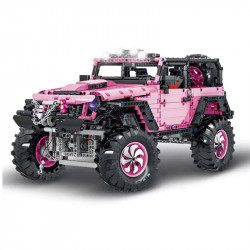what is steam punk?

What is steam punk?
An artistic movement known as steampunk draws inspiration from the 19th-century steam era.
The creative forces of human society experienced a massive boom during the first industrial revolution of the 19th century. Science and technology have allowed people to change nature.
They have also freed us from strict religious control. Firewood, which depends on the weather, has been replaced by coal. Coal has become the main energy source for society.
Humankind has had limitless power since the invention of the steam engine. The hitherto distinct worlds become one through the thundering trains and ships.
The world experienced an exceptional surge of vitality during the Victorian era due to the high wealth of the capitalist global market. Black technologies, such as robotic arms and engines, have developed quickly. This growth comes as human research and technology experience rapid change. The romance of big business was palpable during that period, and people were full of hope that technology would transform society in the years to come.
What we see today was made in the 20th century. Artists used simple materials like steel, machines, and steam engines.
They created an overhead view of the world. They also combined this aesthetic with elements from Japan's Taisho and England's Victorian eras and unbridled magic and imagination. —steampunk.
Steampunk art has three distinctive visual elements: steam, machinery, and Verolia. Steampunk infers an exceptional artistic beauty by depending on these particular aesthetic markers.
The first is the machinery that is everywhere.
The "difference engine" is a symbol of the steampunk design language. The British created the first different engine in the world in 1834. This computer is entirely mechanical and uses accurate transmission mechanisms to compute polynomial functions.
The Difference Engine was written by American science fiction author William Gibson in 1991. It created a buzz in the science fiction community. William Gibson's "Neuromancer" is seen as the start of cyberpunk.
At that time, literary critics called "The Difference Engine" "steampunk." They also took the term "cyberpunk" for themselves. Since its inception, steampunk has had a tight relationship with machinery.
This was the age of pure mechanical beauty in industrial design, predating the arrival of the electrical age. Steampunk design mainly uses pure machinery; integrated circuits and electronic tubes are rare in this environment.
One of the unique joys of steampunk is its use of complex gears and rods. These parts help send commands to large machines. It also pushes the boundaries of classical mechanics and uses mechanical energy to do a variety of amazing feats.
Steampunk, influenced by 19th-century industrial levels, will highlight the grit of metal. Humans have not yet developed streamlined designs, and all machines are grudgingly welded together with enormous rivets. Since steampunk society does not use electricity, people must heap a mountain of metal components on various mechanical devices. The smart and simple interior design, along with the bold black outline, shows the tough, edgy look of steampunk.
People will feel a sense of steampunk when they see many machines in real life. The mechanical parts of the genre are very common.
Steam and steam engines come in second.
In the steampunk universe, the steam engine is the primary energy source for civilization, and internal combustion engines are uncommon. Coal-burning steam boilers are crucial to everything from industries to trains, from ironclads to laboratories. A smoldering steam engine is a requirement in the steampunk universe, just as there must be rainy neon lights in the cyberpunk universe.
The bulky and sluggish quality that characterizes the steampunk universe is frequently intimately associated with the steam element. The vast machines of the steampunk universe are slow because of the steam engine's meager gear ratio. Trains must run loudly, warships must be significant, and even flying items such as airships or sky castles must soar slowly.
The steampunk world cannot escape excessive pollution due to the extensive use of coal. Another visual aspect of the steampunk environment is flowing sewage and diffuse smoke.
Victorian style, magic, and dark technology make up the third.
Victorian Britain is the primary setting for steampunk fiction. Steampunk has a wide range of styles. It reflects the change from farming to industrial society. In this world, local culture mixes with global imperial rule.
Steampunk primarily carries on Victorian Europe's popular design language. Architectural design mainly uses Baroque and Rococo styles. These styles create a "punk" atmosphere. They contrast the rich look of classical palaces with the simple factories and homes from the industrial age.
Fashion primarily emulates the Verolia era of British clothes. Men wear trench coats, leather riding boots, and gentlemen's top hats, often paired with motorcycle goggles or all in one piece. Women wear whalebone corsets and lace textiles widely.
Specs. At the same time, people will wear advanced gear that goes beyond history. This includes complex robotic arms, flying watches, and gas masks shaped like medieval beaks. These items will contrast sharply with traditional attire and contribute to the "punk" vibe.
There is much blurring between science and magic in the steampunk world. At that time, people thought magic and special powers were real. They saw many scientific and technological advances as no better than magic.
In the steampunk world, you will see large steel ships and ancient monsters together. You will also find evil scientists using mechanical computers to study magical substances.
Steampunk highlights the intertextual dialogue between science and mysticism, in contrast to cyberpunk's total disenchantment of science in magic. Steampunk has a unique charm and creativity.
It combines robotic arms with flying brooms. It mixes the chemical industry with mysterious alchemy. It brings together scientists and magicians.
In conclusion, steampunk is an intriguing cultural idea. Steampunk combines sci-fi and retro styles. It features powerful steam engines and striking mechanical designs. This creates a unique beauty that sets it apart from other punk cultures, like cyberpunk and wasteland punk.
Cyberpunk is rife with critiques of capitalism and complaints about how technology controls people. These two punks have a detrimental influence on both technology and people.
Wasteland punk highlights the harsh reality of a post-nuclear world. It shows a negative view of nuclear war and the end of humanity. There is a bleak prognosis for the future.
On the other hand, Steampunk is all about the lovely picture of a utopian future filled with reverence for technology. Humans use science and technology to change and control the natural world.
Japanese steampunk is a new subgenre made possible by Japanese animation and video games. In Japan, the Taisho era (1912–1926) is the primary setting for steampunk. At this time, Japan has only recently caught up to the final wave of the first industrial revolution.
Japanese steampunk originated from blending advanced European and American culture with indigenous traditional cultures brought about by the migration from Asia to Europe. Japanese people walk in clogs and wear motorcycle goggles on their heads.
They drive a large steel ship they learned about from the West. They also dress in kimonos and underskirts. Japanese steampunk is uniquely beautiful because of all these fantastic combinations.

